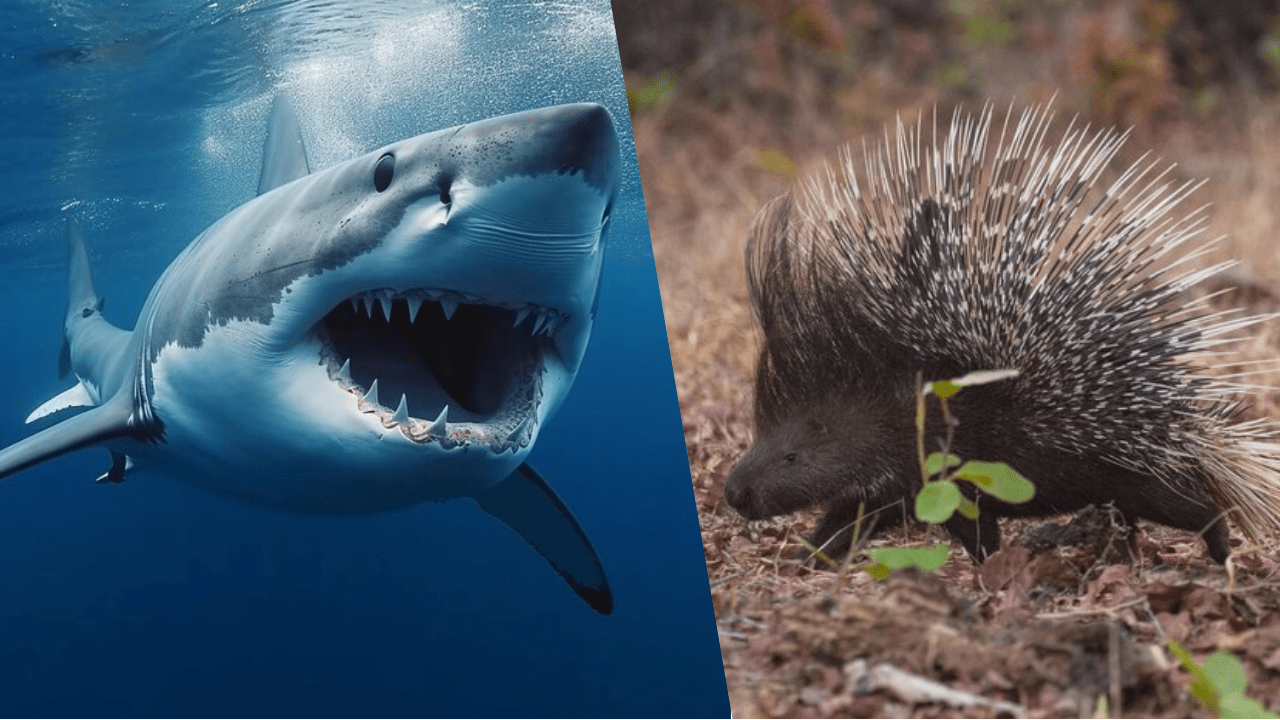In a bizarre and unprecedented event, Australian scientists were left astounded when a tiger shark regurgitated a spiky echidna. This peculiar incident occurred during a routine marine life observation off the coast of Australia, revealing an unexpected interaction between two distinctly different species.

The tiger shark (Galeocerdo cuvier), known for its indiscriminate eating habits, has a reputation for consuming a wide range of marine life and even inedible objects. However, finding an echidna in its stomach was a first for researchers. This surprising discovery sheds light on both the feeding behavior of tiger sharks and the resilience of echidnas, which are typically land-dwelling creatures known for their spiky defense mechanism.
The Unlikely Encounter
The incident occurred when marine biologists were conducting a study on tiger shark populations and their dietary habits. As part of the research, they captured and tagged several sharks to monitor their movements and feeding patterns. During the tagging process, one of the sharks unexpectedly regurgitated an echidna.
Echidnas, also known as spiny anteaters, are native to Australia and are one of the few egg-laying mammals (monotremes) in the world. They are primarily terrestrial animals, known for their ability to burrow and their diet of ants and termites. The presence of an echidna in a tiger shark’s stomach was a shock to the scientists, who had never before documented such an occurrence.
Insights Into Tiger Shark Behavior
Tiger sharks are known for their opportunistic feeding behavior, which includes scavenging and preying on a diverse array of marine life. Their diet typically consists of fish, sea turtles, birds, and even smaller sharks. They have also been known to ingest man-made objects like license plates and tires, illustrating their non-discriminatory eating habits.
The discovery of the echidna suggests that tiger sharks may venture closer to shore or even into freshwater areas more frequently than previously thought. This behavior could explain how the shark encountered and consumed the echidna. It also raises questions about the shark’s ability to adapt its hunting strategies based on the availability of prey.
Echidna Resilience and Defense Mechanisms
Echidnas are equipped with a formidable defense mechanism in the form of their spines. When threatened, they curl into a ball, making it difficult for predators to consume them. This defense is usually effective against land predators, but evidently, it did not deter the tiger shark.
The resilience of echidnas is further highlighted by their ability to survive in a variety of habitats, including forests, deserts, and urban areas. They are solitary and nocturnal, often burrowing during the day to avoid heat and predators. Their unique biological traits, such as a low body temperature and slow metabolism, enable them to thrive in harsh environments.
Implications for Marine and Terrestrial Ecosystems
This extraordinary encounter between a tiger shark and an echidna has several implications for both marine and terrestrial ecosystems. It highlights the interconnectedness of these environments and the potential for unusual interactions between species.
For marine biologists, the event underscores the importance of studying the full range of tiger shark behavior, including their movements in coastal and freshwater areas. It also emphasizes the need for conservation efforts to protect these versatile predators, which play a crucial role in maintaining the balance of marine ecosystems.
For researchers studying echidnas, the incident offers a unique perspective on the challenges these animals face in the wild. It also reinforces the importance of understanding the diverse threats to echidna populations, which include habitat loss, climate change, and now, apparently, unexpected marine predators.
Conclusion
The shocking discovery of a spiky echidna inside a tiger shark’s stomach has provided scientists with a rare and intriguing glimpse into the dietary habits of these apex predators and the resilience of one of Australia’s most unique mammals. This unusual event serves as a reminder of the complexity and unpredictability of nature, encouraging further research into the interactions between marine and terrestrial wildlife.
As scientists continue to study these fascinating creatures, they remain committed to uncovering the mysteries of their behaviors and ensuring their preservation for future generations. The unexpected encounter between a tiger shark and an echidna is a testament to the endless wonders of the natural world and the importance of maintaining biodiversity in all ecosystems.
Read Next:

The Psychology of Love: Why Valentines Day Matters More Epic Than You Think
Discover the psychology of love and why Valentines Day is more important than you think. Learn how love impacts the brain, strengthens relationships, and boosts

Premier League Highlights: Arsenal Humiliate Man City 5-1, Spurs and Palace Secure Crucial Wins
Arsenal demolished Manchester City 5-1 in a statement premier league highlights win, reigniting their title hopes. Meanwhile, Crystal Palace stunned Man United 2-0, and Tottenham

How Budget 2025 Impacts the Indian Middle-Class: Major Tax Benefits and Glaring Omissions
Budget 2025 offers major tax relief to the middle class, including zero tax on incomes up to ₹12 lakh. However, it misses out on incentives
